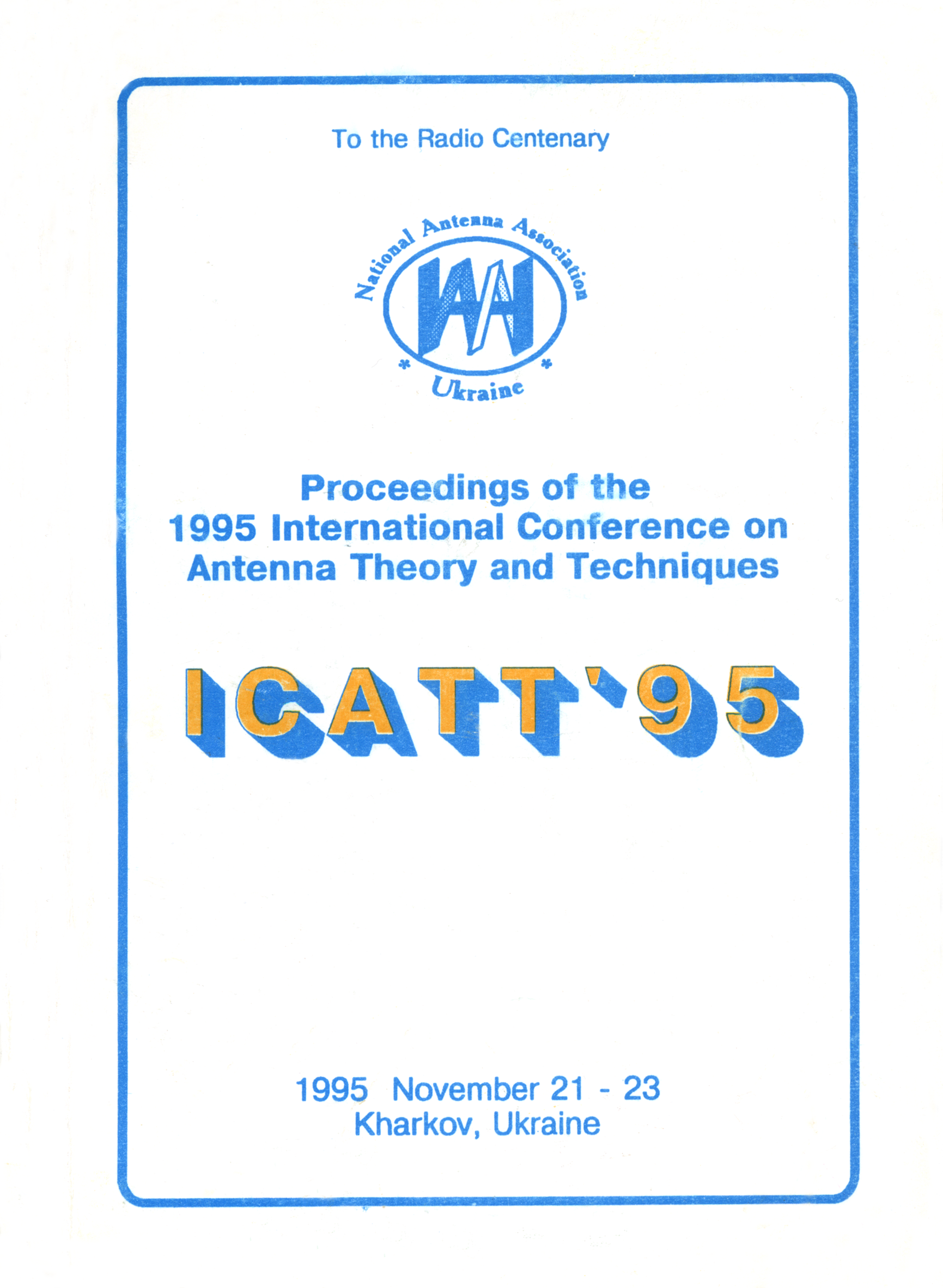Theory and experiment of the microwave beam power transmission systems
DOI:
https://doi.org/10.1109/ICATT.1995.1234179Abstract
The paper presents the main results of the investigation of wireless Microwave Beam Power Transmission Systems (MBPTS), realized at Kharkov Technical University of Radio Electronics. The investigation was carried out in the following two directions:
- analysis and optimization of MBPTS efficiency,
- creating the principles of designing the efficient MBPTS rectennas serving for the reception of microwave power and transformation it into DC power.
Rectennas are non-phased antenna arrays consisting of a large number of Receiving-Rectifying Elements (RRE), each consisting of a radiator, a receiving circuit using the Schottky diodes and the Low-Pass Filters (LPF). RRE outputs are connected to a load through a DC Power-Collection Circuit (PCC).
To solve the first direction tasks, it was investigated the influence of non-linear phenomena in the rectenna on the maximum MBPTS efficiency. It was shown that the resulting MBPTS efficiency can be approximately presented as a product of three partial efficiencies: the efficiency of the microwave power interception by the rectenna, the efficiency of rectenna rectification, and the DC power collection efficiency. Correctness of this approach for an engineering estimation of the overall MBPTS efficiency maximum has been confirmed by the results of determining the field distributions at the transmitting antenna and rectenna aperture that produce MBPTS efficiency maximum. In this case the processes of the microwave power interception and rectification were considered together [1].
Presenting MBPTS efficiency as a product of three partial efficiencies has allowed us to investigate the rectenna as a single device. To solve the second direction tasks, the main attention was paid to the rectenna efficiency and compatibility characteristics, such as the level and angular distribution of the leakage radiation. These characteristics are defined by the performance of rectenna’s RRE. That is why, first of all, a detailed analysis of a single RRE, which was of the Antenna with Non-linear Elements (ANE) type, has been realized that allowed us to use the general ANE theory [2], The dependences of RRE characteristics on the radiator type, rectification circuit, LPF parameters, diode parameters, and the level of input power were studied. The results obtained for the various variants of RRE were reviewed in [3] and formed the basis for further investigation of multi-element rectennas with uniform and non-uniform illumination of their aperture. During this investigation the methods for determining the efficiencies of rectenna rectification and DC power collection have been proposed.
To find the efficiency of a large-aperture rectenna rectification in MBPTS, an approach based on the infinite periodic array approximation, under the condition of Gaussian distribution of the microwave power density incident on the rectenna aperture, has been developed. In order to calculate the DC power collection circuit efficiency, an RRE was considered as an equivalent DC Oscillator (DCO). The rectenna was considered as a totality of a large number of non-identical oscillators connected to a common load. It was shown that the DC power collection circuit efficiency could be increased in the following ways: by changing RRE parameters (of equivalent DCO) depending on its location in the aperture, by a rectenna aperture layout for the different types of RRE, by the transition to non-uniformly spaced rectennas, and by the synthesis of optimum PCC topology. Numerical simulations of some realistic constructions showed that the realization of the methods mentioned above would enable us to increase the DC power-collection circuit efficiency by approximately 15-20%. Besides of rectenna efficiency, the leakage radiation was studied. The obtained results are presented in [3, 4].
Together with theoretical investigation, a complex of measurements using experimental equipment described in [5] has been carried out. Some parameters of MBPTS such as interception and rectification efficiencies, efficiency of DC power collection. DC power at the output of rectenna and its single elements have been measured under the conditions of uniform and non-uniform illumination of rectenna. This investigation showed a good agreement between experimental and theoretical results.
References
Y.S. Shil'nn, V.M. Shokalo, A.M. Rybalko, Efficiency of energy transmission systems with microwave beam, Proc. Int. Symp. on Recent Advances in Microwave Technologies (ISRAMT-95), Kiev, Ukraine, 1995, pp. 242-249.
Y.S. Shifrin, A.I. Luchaninov, A.S. Posokhov, Nonlinear effects in active phased arrays, Russian J. Communication Technology and Electronics (engl. Tran si.), vol. 39, no 7, 1994, pp. 1095-1106 (in Russian pagination).
Y.S. Shifrin, A.I. Luchaninov, V.M. Shokalo, Receiving-Rectifying Elements in Rectenna Systems, monograph deposited by UkrNIlNTI, no 841-Uk89, Kiev, 1989, 181 p. (in Russian).
Y.S. Shifrin, et al., Spurious radiation of rectenna receiving-rectifying elements, Proc. Electromagnetic Compatibility Symp., Wroclaw, Poland, 1994.
A.A. Konovaltsev, et al., Experimental study of rectennas with full-wave receiving-rectifying elements, this volume.

